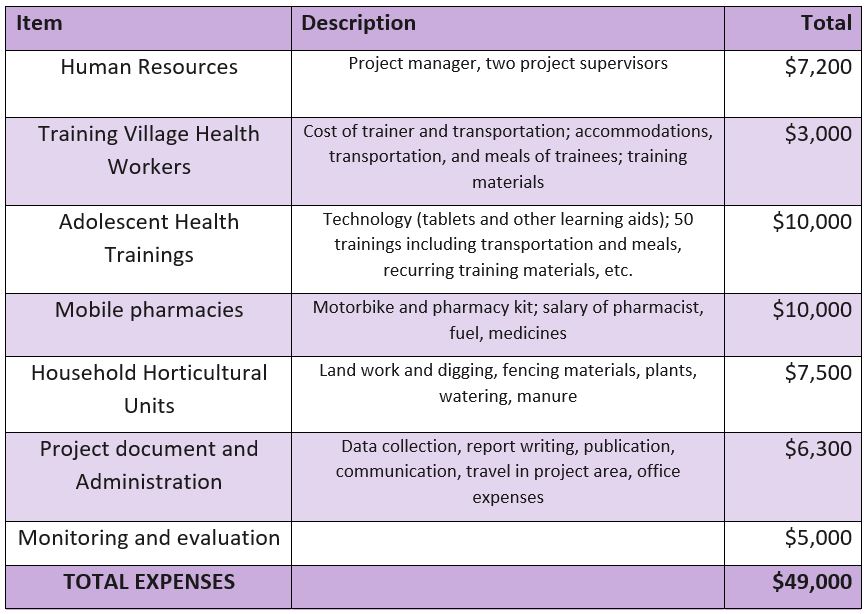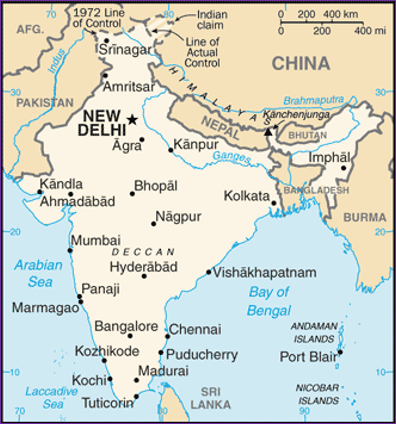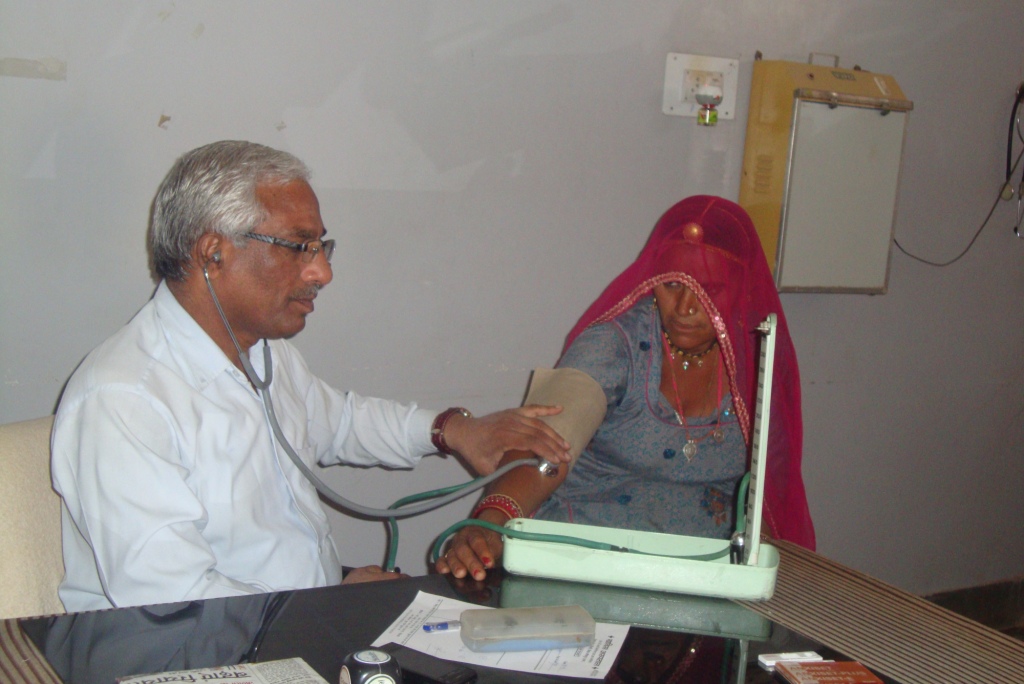
Mission
The Gandhian philosophy of “Sarvodaya” – all rising, but the last person first – is the foundation for GRAVIS’ vision and mission. GRAVIS works for the collective ascension of men, women, and children, regardless of economic situation, caste, or religion. GRAVIS also adheres to another Gandhian notion, “Gram Swarajya,” or village self-rule, when implementing its efforts. GRAVIS works toward the rehabilitation of the rural community, enabling village ownership and control over its environment, institutions, and relations.
Life Challenges of the Women Served
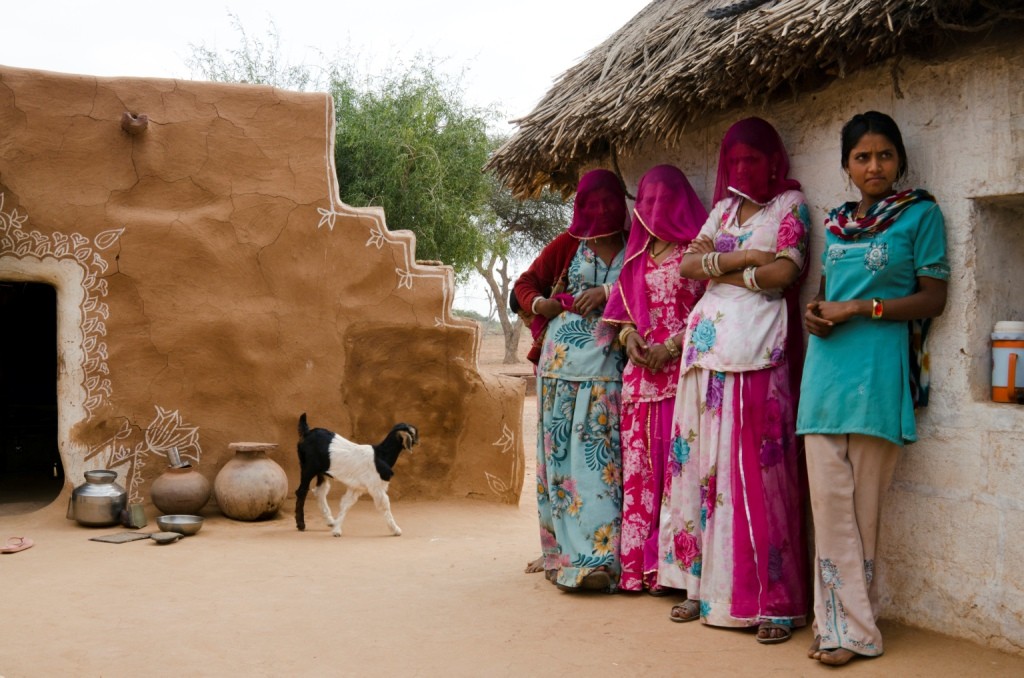 The Thar Desert is a drought prone region in northwest India that bleeds into Pakistan. It is the most densely populated desert ecosystem on earth, with nearly 24 million people living in an area the size of Nebraska, and a 28 percent population growth rate every ten years. Here, the landscape is dotted with crops growing among sand dunes, protected forests, and isolated farms. This area, which touches the states of Rajasthan, Gujarat, Punjab, and Haryana, is considered one of the most economically challenged regions in India. Erratic rainfall and drought causes great losses to livelihood. Feudal society, poor socio-economic status of women, and the prevalence of patriarchy are predominant features of the rural communities in Rajasthan.
The Thar Desert is a drought prone region in northwest India that bleeds into Pakistan. It is the most densely populated desert ecosystem on earth, with nearly 24 million people living in an area the size of Nebraska, and a 28 percent population growth rate every ten years. Here, the landscape is dotted with crops growing among sand dunes, protected forests, and isolated farms. This area, which touches the states of Rajasthan, Gujarat, Punjab, and Haryana, is considered one of the most economically challenged regions in India. Erratic rainfall and drought causes great losses to livelihood. Feudal society, poor socio-economic status of women, and the prevalence of patriarchy are predominant features of the rural communities in Rajasthan.
Among the numerous problems facing rural communities in the Thar Desert is a lack of education and a profound lack of access to healthcare. Thar inhabitants cannot afford to spend time or money on health when the priorities are water, food, and fodder. As a result, the Thar Desert has some of the lowest health indicators in India. State healthcare expenditures in Rajasthan are among the lowest in the country, with 95 percent of revenues allocated to other needs. In this area, healthcare does not reach most poor people, lower castes, communities living in remote areas, and especially women. In addition, up to 43 percent of healthcare providers in Primary Health Care Centers (PHC) are absent.
Health problems are linked to low levels of health education, limited access to health services due to remoteness of villages, and limited government-trained health staff who are often shared between health posts. In the Thar Desert, this has resulted in widespread neglect of the health of women, children, and the elderly, resulting in high rates of pregnancy, miscarriage, premature infant death, maternal mortality and morbidity, infections, and chronic diseases. A significant number of children under age 15 are malnourished and suffer from a variety of diseases as a result of wholly inadequate healthcare facilities.
The Project
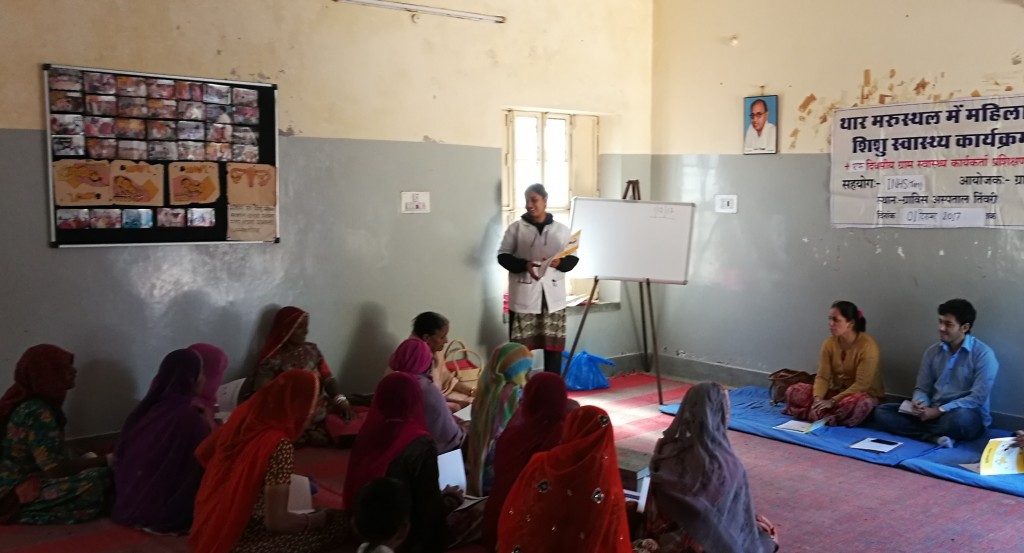 GRAVIS’s project – Improving the Health of Women and Girls in the Thar Desert (IHWG) – improves the health of women and girls in drought-afflicted areas, with a specific focus on their sexual and reproductive health. This program brings self-reliance, leadership, and well-being to women and girls. Benefits include a better understanding of women and girls’ health needs, promotion of gender equality, enhanced food and nutrition security through horticulture, and availability of medicines within the villages. This sustainable, community-based program also serves as a solid replicable model for other arid regions.
GRAVIS’s project – Improving the Health of Women and Girls in the Thar Desert (IHWG) – improves the health of women and girls in drought-afflicted areas, with a specific focus on their sexual and reproductive health. This program brings self-reliance, leadership, and well-being to women and girls. Benefits include a better understanding of women and girls’ health needs, promotion of gender equality, enhanced food and nutrition security through horticulture, and availability of medicines within the villages. This sustainable, community-based program also serves as a solid replicable model for other arid regions.
The GRAVIS team will initiate the project by organizing meetings with the local communities and with active involvement of women and girls. A local project advisory group of women and girls will be formed. GRAVIS will actively collaborate with existing community-based organizations and local government health service providers.
Ultimately, IHWG will improve the lives of women and girls by introducing three key components:
- Village Health Workers (VHW) and a newly designed online curriculum – GRAVIS will select and train 10 local women to serve as VHWs, of whom six will be trained during the one-year project period. These women will play a key role in educating the women and adolescent girls and boys about important issues pertaining to their health. The health education component will utilize digital technology, which will be easy to learn and will have a long lasting impact.
- Mobile Pharmacies – Two pharmacists will provide nutritional supplements and medical supplies at people’s doorsteps at an affordable cost. Each pharmacist will have a motor bike and pharmacy kit and will travel to approximately 600 women and girls per month to provide nutritional supplies and basic medication. The services will be sustainable with a cost recovery approach. Mobile pharmacies have not been used in the Thar Desert and will therefore be an innovative solution.
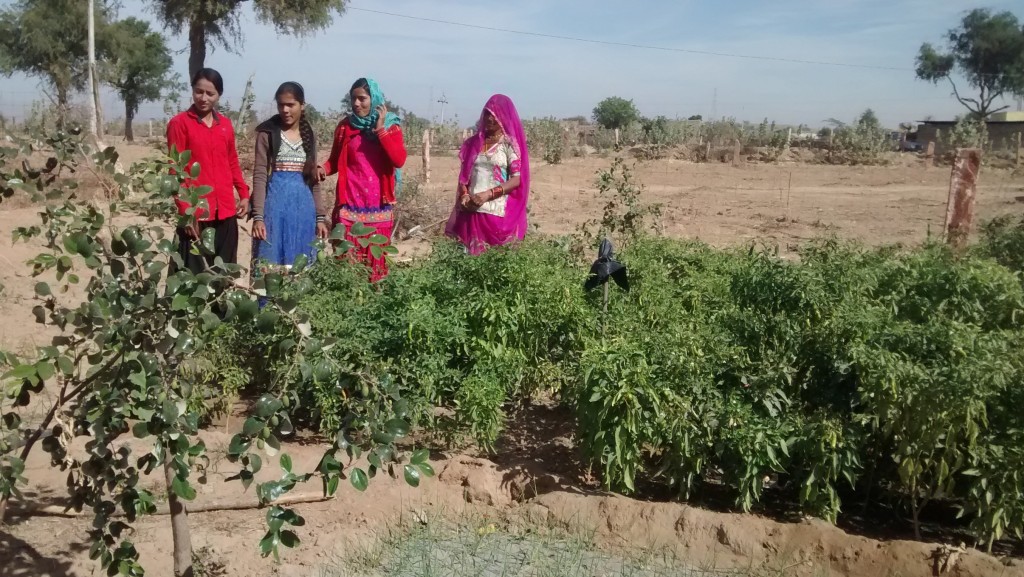 Household Horticultural Units (HHU) – Thirty low cost, drought resistant gardens will provide critical nutrition, vitamins, and micro-nutrients for women and girls, who will learn how to grow their own vegetables and fruits. GRAVIS will provide the land, fencing materials, plants, and training for general maintenance, including watering and amending with manure. GRAVIS will develop 30 HHUs, which assists 30 households or 240 – 270 individuals.
Household Horticultural Units (HHU) – Thirty low cost, drought resistant gardens will provide critical nutrition, vitamins, and micro-nutrients for women and girls, who will learn how to grow their own vegetables and fruits. GRAVIS will provide the land, fencing materials, plants, and training for general maintenance, including watering and amending with manure. GRAVIS will develop 30 HHUs, which assists 30 households or 240 – 270 individuals.
This program takes place in five remote Thar villages, where women and girls are severely challenged by food and water insecurity as well as a lack of medical and public health services. They suffer from a wide range of health problems including anemia, malnutrition, and vitamin deficiencies. The total population in these five villages is 7,500, of which about 3,500 are women and girls. All 3,500 women and girls will benefit from this program. In addition, 500 adolescent boys will also attend training, for a total of 4,000 direct beneficiaries. The project will provide indirect benefits to the remaining population of more than 3,000 men. GRAVIS will implement the project through active partnerships with its existing community-based organizations and the local communities, and it will seek support from local government authorities for technical resources and scale-up.
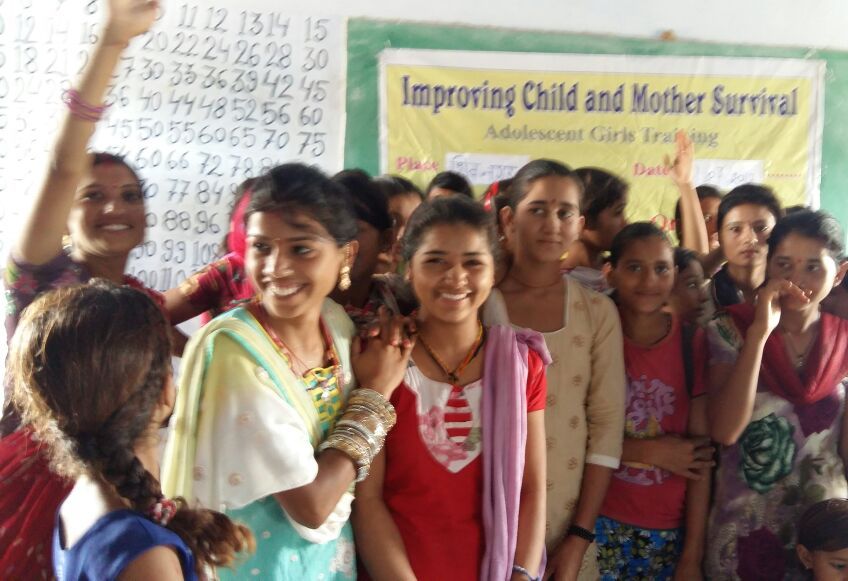 Sustainability and self-reliance are at the core of the GRAVIS methodology. All interventions will be led by women and girls. After DFW’s grant period has passed, the VHWs will remain in place, training materials will continue to be disbursed, mobile pharmacies will continue functioning, and HHUs will continue to provide food and nutrition security. Project leaders will prepare a project assessment at the beginning of the process, followed by a midterm review, summary document, and final review report and meeting. The project document at the end of the project year will compare the progress made to the conditions during the assessment and will produce an outcome report using quantitative and qualitative indicators.
Sustainability and self-reliance are at the core of the GRAVIS methodology. All interventions will be led by women and girls. After DFW’s grant period has passed, the VHWs will remain in place, training materials will continue to be disbursed, mobile pharmacies will continue functioning, and HHUs will continue to provide food and nutrition security. Project leaders will prepare a project assessment at the beginning of the process, followed by a midterm review, summary document, and final review report and meeting. The project document at the end of the project year will compare the progress made to the conditions during the assessment and will produce an outcome report using quantitative and qualitative indicators.
The larger vision behind the project is to establish a community based, sustainable model that has a positive impact on women and girls’ health through knowledge building, outreach medical support, and nutritional interventions. The hope is that the success of the project/model will inspire the local government and other NGOs to replicate the project to address the serious gaps in women and girls’ health conditions in India and other areas.
Direct Impact: 4,000 Indirect impact: 3,500
UN Global Goals for Sustainable Development
![]()
![]()
![]()
![]()
![]()
![]()
Questions for Discussion
- Why do you think it is important to include adolescent boys?
- Why are mobile pharmacies a better option than traditional pharmacies?
- How does global climate change affect this program and how could this type of program make an impact on the environment?
How the Grant Will be Used
DFW’s grant of $49,000 will be used for the following:
Why We Love This Project/Organization
We love that GRAVIS is working to improve the health and living conditions of women and girls living in the Thar Desert with a community-based and sustainable model. This project seeks to bring self-reliance, leadership, and well-being to communities that suffer from chronic food and water insecurity and very low health indicators.
Evidence of Success
GRAVIS has many significant achievements, including: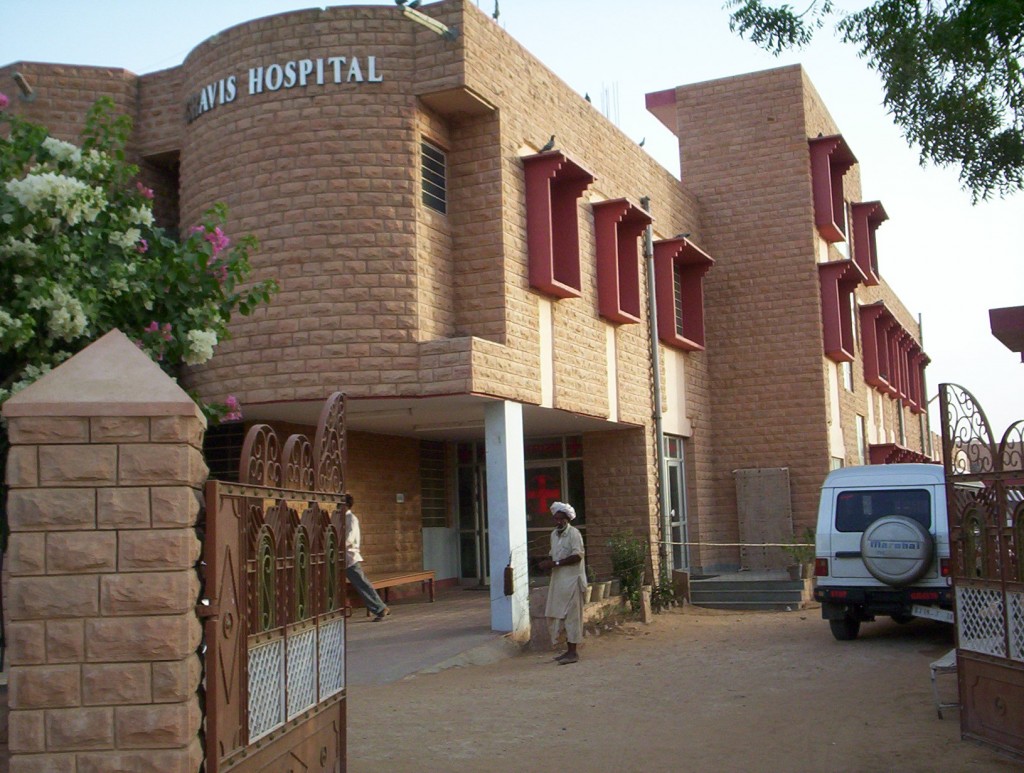
- Organization of a community-based health program benefiting more than 250,000 people with a focus on women and girls. GRAVIS has also set up a fully equipped rural hospital of 70 beds and has developed a network of over 500 Village Health Workers. About 30,000 women and girls receive medical support in a year.
- Formation of community-based organizations, including 969 village development committees, 1,692 self-help groups of women, and village funds in over 100 villages in order to develop leadership and self-reliance among rural communities.
- In more than 500 villages of Thar, GRAVIS organizes health activities on reproductive health, nutrition, eye care, malaria control, TB control, prevention of HIV/AIDS, and occupational lung diseases.
- Construction of 6,869 taankas (drinking water storage tanks), 5,374 khadins (farm dykes), 273 village ponds, and 599 beries (percolation wells for drinking water storage) for water harvesting. The activities have benefited more than 70,000 households, with a major impact on relieving women and girls from water-fetching drudgery.
- Set up more than 300 seed banks, 4,251 fruit orchards/horticulture units, 48 community forests and 2,400 hectares of pasture land providing food and nutrition security.
- GRAVIS has set up 98 schools for primary education. More than 7,300 children (about 40 percent girls) are enrolled in the schools. School children are linked with a mid-day meal program and outreach health services. In GRAVIS schools, a strong focus is given on educating children on environmental issues, health and hygiene, and sanitation.
GRAVIS has received numerous awards and recognition for its dedicated services to the Thar Desert communities, including:
- Indian Merchants Chambers (IMC) Award, 2005
- Anadi Kamal Award of Voluntary Health Association of India (VHAI)
- Ram Krishna Dalmiya Award, 2006
- Americares Spirit of Humanity Award, 2011
- Giving back 2015 Award as best NGO in environment category, 2016
- Jamnalal Bajaj award of 2017
About the Organization
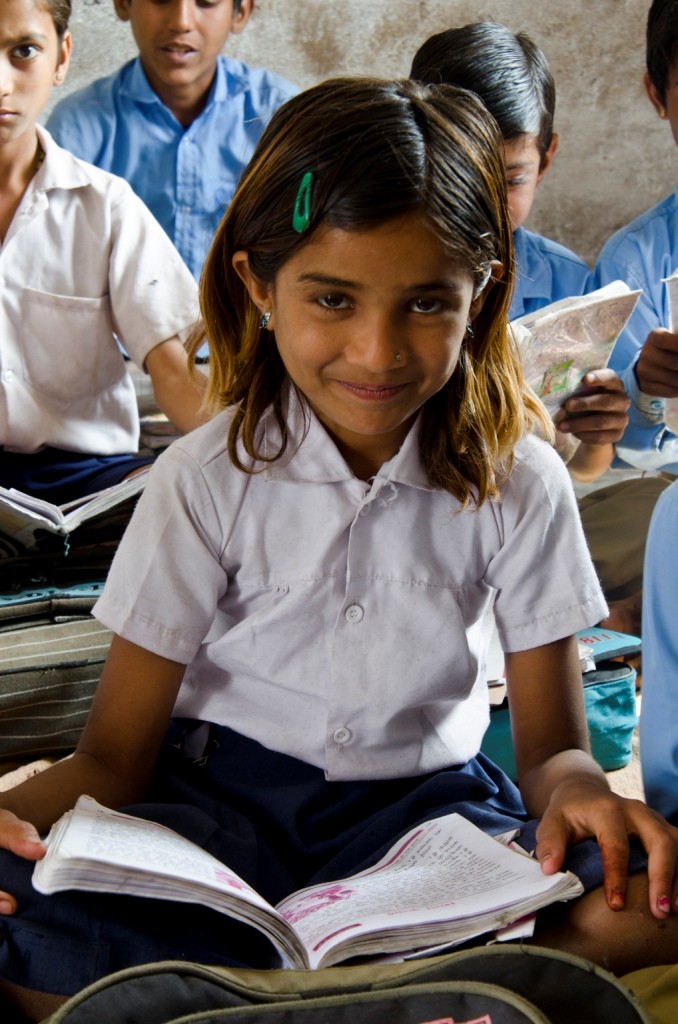 Gramin Vikas Vigyan Samiti (GRAVIS) or Center of People’s Science for Rural Development was established at Jelu Gagadi, Jodhpur, India, in 1983 by a group of Gandhian development activists. It was cofounded by Shashi Tyagi, a prominent woman activist of national and international recognition. The organization was formed to organize rural development activities in the remote parts of Thar Desert. At present, GRAVIS’ service area includes more than 1,300 villages of eight districts of the Thar Desert of Rajasthan and in the States of UP and Uttarakhand in India. The Thar Desert and other regions where GRAVIS works are severely impoverished and needy. Overall, GRAVIS has touched the lives of about 1.3 million rural people.
Gramin Vikas Vigyan Samiti (GRAVIS) or Center of People’s Science for Rural Development was established at Jelu Gagadi, Jodhpur, India, in 1983 by a group of Gandhian development activists. It was cofounded by Shashi Tyagi, a prominent woman activist of national and international recognition. The organization was formed to organize rural development activities in the remote parts of Thar Desert. At present, GRAVIS’ service area includes more than 1,300 villages of eight districts of the Thar Desert of Rajasthan and in the States of UP and Uttarakhand in India. The Thar Desert and other regions where GRAVIS works are severely impoverished and needy. Overall, GRAVIS has touched the lives of about 1.3 million rural people.
GRAVIS focuses its efforts on the restoration of dwindling natural resources and on the promotion of marginalized groups. It believes in blending the traditional wisdom with new techniques to create long-term, sustainable and cost-effective means for improving the lives of rural inhabitants. In order to achieve its overall goal of creating self-reliant village communities, it strives to involve the local communities in its programs and interventions, train and build their capacities further, and develop community ownership. GRAVIS’ actions focus on poor, backward castes (Other Backward Class (OBC) is an official collective term used by the Government of India to classify castes which are educationally or economically disadvantaged), and marginalized section of Thar Desert communities with particular emphasis on women, children, and elderly. Accordingly, the participation of women has been ensured in all programs and activities. GRAVIS has a strong focus on having a sizable proportion of women in its team and at senior positions.
Major programmatic areas for GRAVIS include promoting education, improving health status, water security, agriculture and forestry and training, capacity building, and human rights. GRAVIS focuses on social development issues such as adolescent health, hygiene, child health, nutrition, education for girls, water, and sanitation. GRAVIS works in the regions where the presence of other NGOs or of government programs is negligible. The organization seeks to serve the communities most in need in remote regions. Forming partnerships with various stakeholders (governmental and NGO) is an important part of their strategy.
Learn more about GRAVIS here.
Where They Work
The Thar Desert is an inhospitable, arid region that lies 75 percent in India and 25 percent in Pakistan. Most of its 24 million inhabitants live in rural areas. Both Islam and Hinduism are commonly practiced, and the primary languages are Sindhi in the southeast, Lahnda in the northwest, and Rajasthani languages in the central and eastern regions. Agriculture is the primary occupation, although many nomads are involved in animal husbandry, crafts, or trade. Although the environment makes for a difficult existence, there is a vibrant culture etched in tradition, and the people enjoy folk music and poetry.
The Thar Desert is a land of extremes. Summers are exceedingly hot, with average temperature range of 106 – 115 degrees and reaching as high as 127 during midday. Winters, on the other hand, are pleasant and dry. Rainfall is practically non-existent, averaging 5 – 10 inches per year, and some years there is no rainfall at all. About 90 percent of total rainfall occurs during the southwest monsoon from July to September. May and June are the hottest months of the year and dust storms blow over 90 miles per hour in May and June.
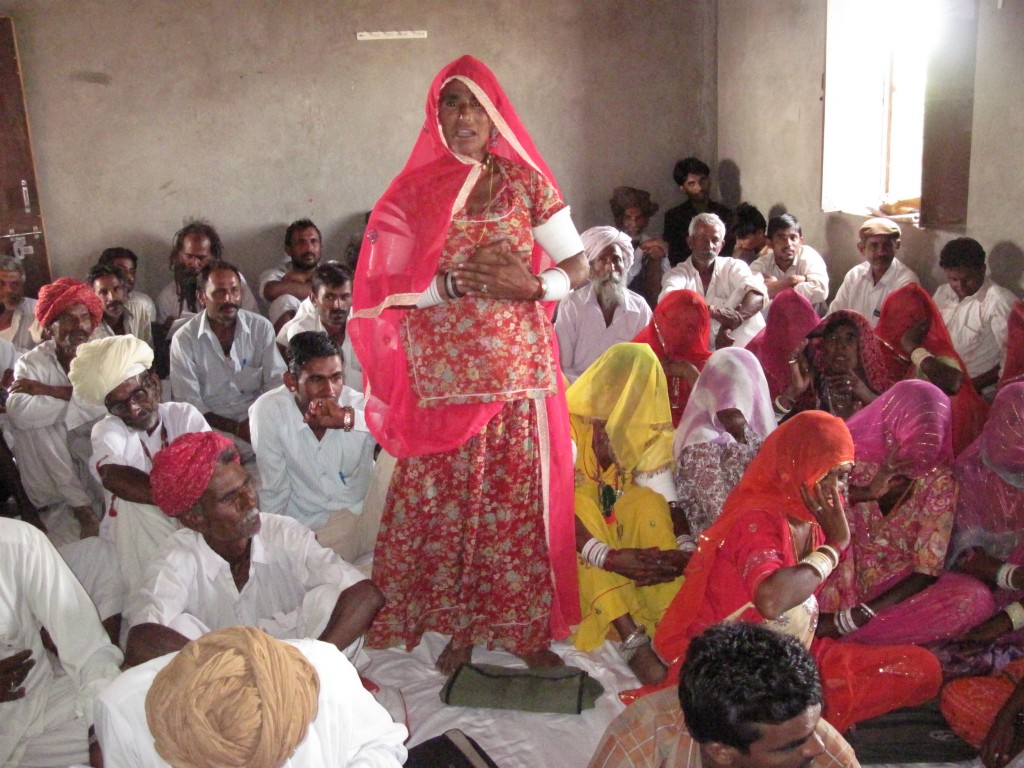 Agriculture is risky in this area because at least one-third of crops fail every year. However, where water is available, farmers grow crops such as wheat and cotton. Many farmers in Thar Desert rely on animal husbandry, tending cows, buffalo, sheep, goats, camels, and oxen. As a result, overgrazing has become an issue. Camels are often used for transportation and for plowing the land. The state of Rajasthan has become a major opium production and consumption area. It is also the biggest wool-producing area in India, with up to 50 percent of all wool produced in Rajasthan. The wool in this area is considered the best in the world for carpet making
Agriculture is risky in this area because at least one-third of crops fail every year. However, where water is available, farmers grow crops such as wheat and cotton. Many farmers in Thar Desert rely on animal husbandry, tending cows, buffalo, sheep, goats, camels, and oxen. As a result, overgrazing has become an issue. Camels are often used for transportation and for plowing the land. The state of Rajasthan has become a major opium production and consumption area. It is also the biggest wool-producing area in India, with up to 50 percent of all wool produced in Rajasthan. The wool in this area is considered the best in the world for carpet making
A closer look the challenges of life in the arid Thar Desert
Water is gold in the Thar Desert, where drought occurs with alarming frequency – once every two to three years between 1901 and 1999. The glaring lack of water plus the high rate of population growth affects humans as well as livestock, putting tremendous pressure on tapping every available drop of water. This has exacerbated the situation, resulting in a frighteningly scarce supply of safe, drinkable groundwater. Today, more than half of the available groundwater in the Thar Desert is brackish, highly saline, and contains a high concentration of minerals that are unsuitable for humans as well as livestock. This has occurred because of loss of natural watersheds, poor mining practices, and large-scale exploitation drilling for agri-business that has caused the water table to fall precipitously.
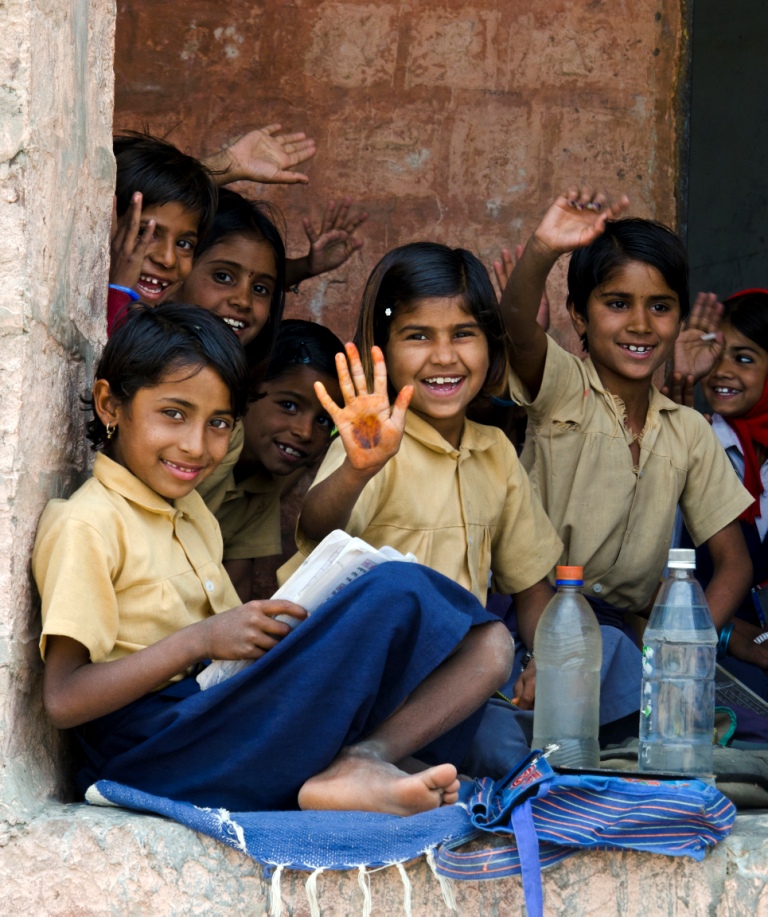 The ripple effect that occurs due to the lack of adequate and safe water is pronounced and life-altering. On a typical day, villagers spend four – six hours fetching water. During the dry period, they must continue to search for water at night. Pockets of twelve western districts where rainfall is less than one inch are at the famine level. Groundwater is only potable at great (expensive, environment-altering) depths. Villagers must rely on capturing every drop of rain possible, which only supplies enough for three to four months. The rest of the year, they must travel between 2 and 25 miles to access water from carriers using tanks on camel carts or tractors – an extremely expensive endeavor at up to $12 for a family of five for 2.5 days. Billions of dollars have been invested in schemes aimed at exploiting what is left of the groundwater, but these endeavors have failed because they are cost prohibitive and require technical expertise.
The ripple effect that occurs due to the lack of adequate and safe water is pronounced and life-altering. On a typical day, villagers spend four – six hours fetching water. During the dry period, they must continue to search for water at night. Pockets of twelve western districts where rainfall is less than one inch are at the famine level. Groundwater is only potable at great (expensive, environment-altering) depths. Villagers must rely on capturing every drop of rain possible, which only supplies enough for three to four months. The rest of the year, they must travel between 2 and 25 miles to access water from carriers using tanks on camel carts or tractors – an extremely expensive endeavor at up to $12 for a family of five for 2.5 days. Billions of dollars have been invested in schemes aimed at exploiting what is left of the groundwater, but these endeavors have failed because they are cost prohibitive and require technical expertise.
Not surprisingly, people die every month due to the scarcity of water, food, and other problems. Twenty-five percent of the sheep population has perished, which leaves the population at risk for meat and milk shortages. Regular consumption of groundwater has led to many health issues, including kidney stones and joint pains. Social life is also restricted due to the lack of water. Women bear the brunt of the water scarcity, since they are the ones responsible for carrying it. Young children are also directly affected, as they often must forego an education to help find water.
Source Materials
https://www.britannica.com/place/Thar-Desert
https://www.policyforum.net/thar-desert-famine-tragedy/
https://tribune.com.pk/story/535478/water-problems-of-thar/
https://nation.com.pk/11-Apr-2016/a-humanitarian-crisis-in-thar-desert
https://www.awamipolitics.com/situation-of-thar-desert-animals-livestock-getting-worse-24525.html
http://revistas.lamolina.edu.pe/index.php/rza/article/viewFile/715/697
https://digitalrepository.unm.edu/cgi/viewcontent.cgi
https://wedc-knowledge.lboro.ac.uk/resources/conference/33/Malik_D.pdf

